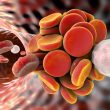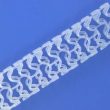Diabetes mellitus patients generally present more diffuse coronary disease, faster lesion progression and higher risk of restenosis after PCI. The way these anatomical differences translate into in a different clinical practice, compared to non-diabetic patients, remains unclear. Prior studies comparing the frequency of angina symptoms in diabetic vs. non-diabetic patients have arrived to contradicting outcomes,...
It Is a Fact: Cerebral Protection in TAVR Has Proved to Reduce Stroke and Death
Cerebral ischemic events after transcatheter aortic valve replacement (TAVR) have been identified as independent predictors of morbidity and mortality. New-generation devices have managed to partially reduce the rate of cerebral events, but it still is around 5.5% at 30 days for patients undergoing TAVR through transfemoral access. First data on cerebral protection devices had only shown...
Very Late Thrombosis in Bioresorbable Scaffolds
The presence of a metallic device interrupts normal laminar flow and creates an artery environment that favors thrombosis, leaving the vessel vulnerable to very late thrombosis. Dual antiplatelet therapy, a better implantation technique, and several improvements in new drug-eluting stents (DES) (thinner struts, and higher polymer stability and biocompatibility) have lowered significantly the incidence of...
Are Bioresorbable-Polymer Stents More Thrombogenic than Durable-Polymer Second-Generation Stents?
Courtesy of Dr. Cristian Jesús Rodríguez. Most stents currently used in percutaneous coronary intervention (PCI) are durable-polymer second-generation drug-eluting stents (DP-DES, with everolimus or zotarolimus). However, it has been argued that the persistence of such a polymer after complete drug elution is one of the main factors for a dangerous complication: stent thrombosis (ST). After...
BVS: Controvertial Scaffold
Courtesy of Dr. Agustín Vecchia. The advent of resorbable vascular scaffolds (BVS) generated high expectations among interventionists because of its potential advantages over bare metal stents. However, when comparing BVS against the Xience stent, we observed an increased rate of events associated to the first device, to their detriment. Among the reasons behind this poor...
Biodegradable-polymer stents are as safe as permanent-polymer stents in a 5-year follow-up
Courtesy of Dr. Carlos Fava. One of the questions around drug-eluting stents (DES) is whether the development of biodegradable polymers would derive in better outcomes than the performance of durable polymers as regards the presence of events. In consequence, the COMPARE II trial was carried out with the aim of testing them in “real-world” patients. This...
AIDA: bioresorbable scaffold thrombosis still a concern in studies
Courtesy of the SBHCI. This study presented at PCR and simultaneously published by NEJM still challenges the safety of bioresorbable scaffolds. This was a multicenter noninferiority work carried out in the Netherlands, comparing 1:1 everolimus-eluting bioresorbable scaffold ABSORB and permanent-polymer everolimus-eluting stent Xience. The primary endpoint was target-vessel failure (a composite of cardiac...
DESSOLVE III: Xience vs. MiStent
The MiStent device is made of cobalt-chromium, with struts of up to 64 µm thick. It is coated with a completely absorbable polymer that contains a microcrystalline form of sirolimus that embeds directly into the vessel wall. The drug is eluted continuously for up to 9 months. This was a multicenter noninferiority study that randomized patients...
Promising Outcomes of Overlapping Stents in Patients Undergoing Bioresorbable Scaffold (BRS) Implantation
Courtesy of Dr. Guillermo Migliaro. In regular clinical practice, overlapping stents are reported in up to 30% of patients undergoing coronary angioplasty, especially due to very long lesions requiring implantation of multiple stents or dissection after the implantation of a first stent. In bare metal stent era, overlapping was associated with unfavorable clinical outcomes...
Bioresorbable scaffolds with drug-eluting stents: do they entail a higher thrombosis risk?
Courtesy of Dr. Leiva. Bioresorbable scaffolds with drug-eluting stents (bioresorbable vascular scaffolds, BVS) have been added to the list of endovascular treatment options for coronary disease. The ABSORB III trial showed the non-inferiority of this stent type to everolimus-eluting metallic stents as regards target-lesion revascularization (TLR) at one year. However, reports have suggested a higher...









